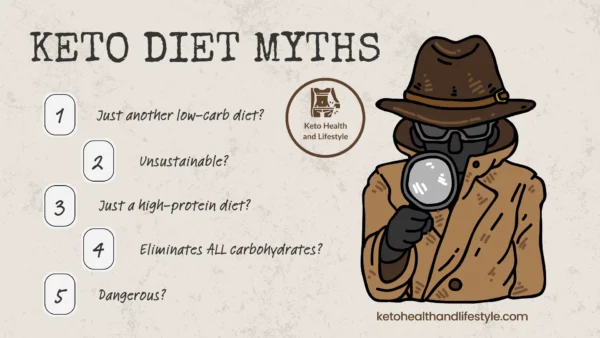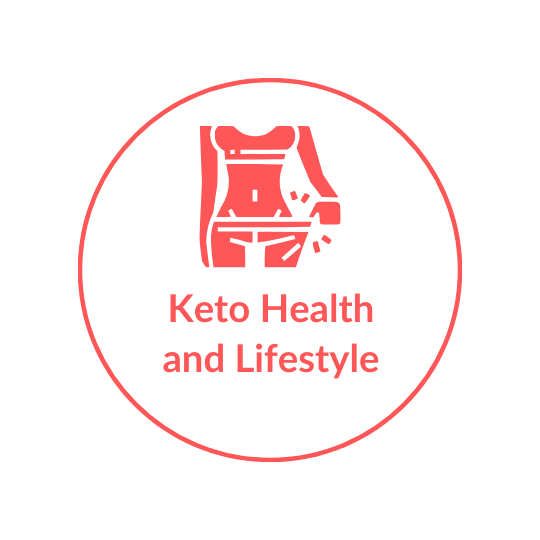This post may contain affiliate links which means I may receive a commission for purchases made through links. Learn more about policies on my about page.
The ketogenic diet, often called “keto,” has become a go-to approach for those seeking weight loss and potential health improvements. This introduction to the ketogenic diet explains the fundamentals of this low-carb, high-fat plan designed to push your body into ketosis—a metabolic state where fat becomes your primary energy source instead of carbs.
With its rising popularity, it’s not just about shedding extra kilos; many find it beneficial for managing blood sugar, increasing energy, and even supporting brain health. Curious to learn more? Our ultimate keto diet food list will help you get started.
What is the Ketogenic Diet?
The ketogenic diet is more than just another eating trend—it’s an intentional approach to food designed to transform how your body generates energy. By primarily consuming fats, cutting back on carbs, and keeping protein intake moderate, you steer your body into a state called ketosis. Let’s break it down further so you can truly understand the keto lifestyle.
Need assistance deciding whether to try keto? Learn Who Should Try Keto and whether this approach aligns with your health goals.

The Basics of Ketosis
At the heart of the ketogenic diet is ketosis, a natural metabolic process. Normally, your body depends on carbs for energy, breaking them down into glucose. However, when you drastically cut your carb intake (typically under 50 grams a day), your body needs an alternative energy source. Interested in how long it takes to get into ketosis? Read this guide.
That’s where ketosis kicks in. Your liver starts converting fats into ketones, which then replace glucose as your primary energy source. Many people also report increased energy levels, mental clarity, and reduced appetite while in ketosis. For an expanded understanding, visit Science Behind Ketosis.

Key Components of the Diet
The ketogenic diet requires balancing macronutrients wisely:
- Fats (70–80%): Healthy fats like avocados, olive oil, nuts, and seeds are staples. Get an in-depth understanding of The Role of Fats in Keto.
- Proteins (10–20%): Think lean meats, eggs, and fish—but don’t overdo it. Learn more about The Role of Protein in Keto.
- Carbohydrates (5–10%): A focus on non-starchy vegetables and occasional berries. Discover The Role of Carbs in Keto.
Understanding this balance is crucial to sustaining ketosis. Check out Common Keto Mistakes to avoid common errors as you begin.

Health Benefits of Ketogenic Eating
Beyond weight loss, keto is associated with numerous benefits like appetite control, brain health, and blood sugar stability. If you’re comparing keto to other low-carb diets, find out how they differ in Keto vs Low Carb.
Weight Loss Potential
One of keto’s standout benefits is its effectiveness for weight loss, as your body begins to burn fat for fuel. For beginners, follow our Keto for Beginners Guide for support through the toughest transition phases.
Challenges and Considerations
Moving into ketosis isn’t always seamless. Some face keto flu—a temporary set of symptoms as your body adapts. Learn how to manage this in Common Keto Mistakes.
Staying Sustainable Long-Term
One challenge is maintaining the diet’s foundation over time. Compare keto to other approaches like Keto vs Paleo to determine what works best for you. If you’re struggling, exploring dietary myths in Keto Diet Myths may also help refine your approach.

Is Keto Right for You?
While incredibly effective, keto isn’t for everyone. Athletes or individuals with high-carb requirements may find it less practical. Get an informed perspective from Who Should Try Keto.
Conclusion
The ketogenic diet offers a transformative way to fuel your body and improve areas ranging from weight loss to mental clarity and blood sugar control. But like any lifestyle change, it’s essential to plan properly and stay informed to avoid common pitfalls.
For first-time keto practitioners, start your journey with our Keto for Beginners Guide. Along the way, refer to in-depth resources to help build your knowledge base, such as Science Behind Ketosis and tips to avoid Common Keto Mistakes.

